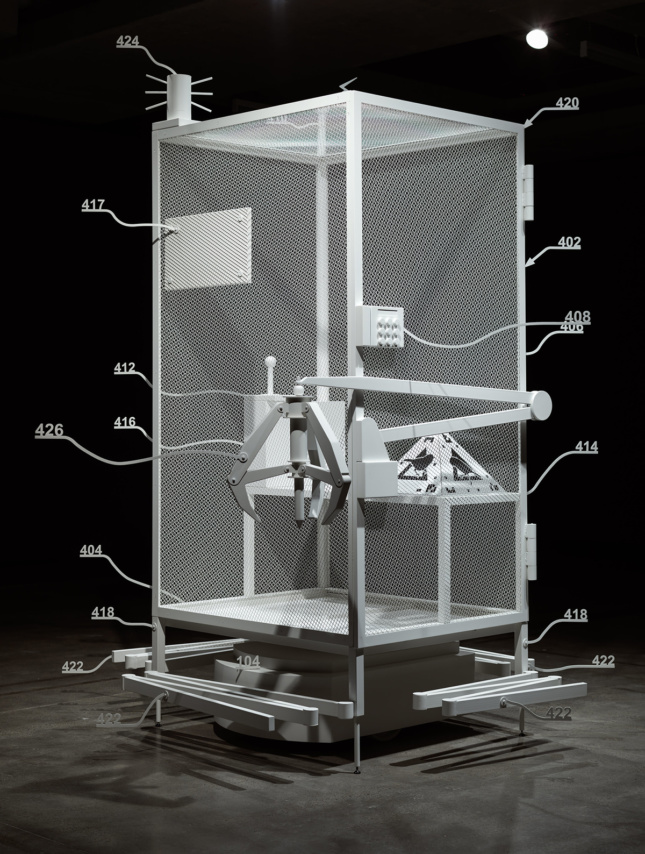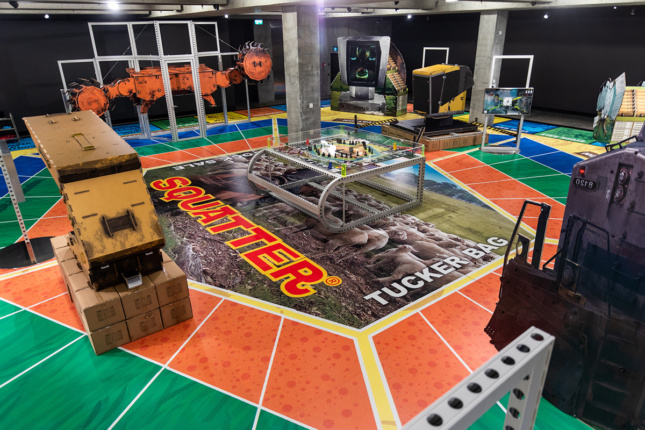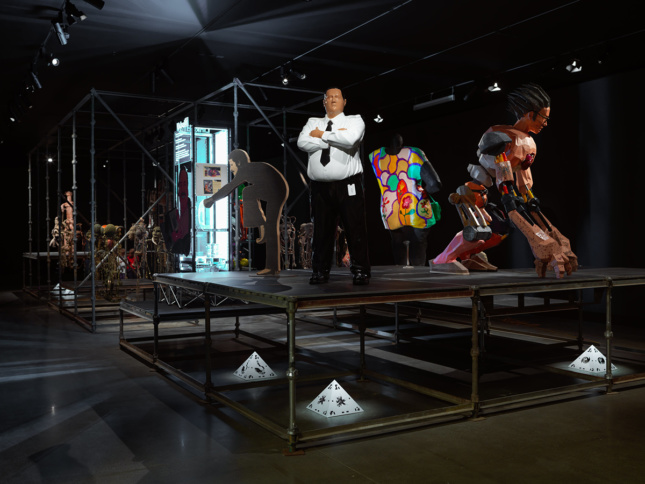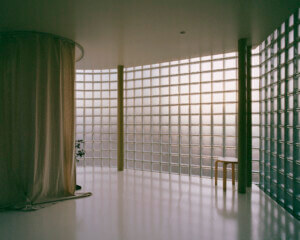Artist Simon Denny is digging into data as a landscape, unearthing the possibilities of extracting material both physical and informational in Mine, a show at the Australian museum Mona. The show has found itself a fitting setting at Tasmania’s iconoclastic museum, the privately-run brainchild of entrepreneur David Walsh, that is itself a winding maze of darkened corridors partially carved into the Triassic sandstone of the Berriedale peninsula. The mine-shaft feeling is only increased by the museum’s new Nonda Katsalidis and Falk Peuser–designed underground extension—a level of subterranean spaces connected by circular stone tunnels with metal ribs that they’re calling Siloam.
Denny, whose previous work has fixated on cryptocurrency, the dissolution of borders, and other complications of our increasingly computerized world, works in the space between the two meanings of mine—both the extraction of physical material, like rare earth metals and lithium necessary for our devices, and the data mining and mining for bitcoins which has increasingly clear environmental impact in the form of outsize carbon emissions and land use. Mine looks at technological shifts and their impact on the IRL environment, as well as the entanglements of colonization and economics that have propelled resource extraction and all its environmental impacts.

Instead of a canary in a coal mine, Mine will feature an augmented reality version of the nearly-extinct King Island brown thornbill, which researchers have recently discovered in Tasmania outside of its normal habitat, living inside a 3D version of a patent diagram of an Amazon warehouse cage that’s in actuality been designed for the company’s notoriously overworked and underpaid human workers. On the walls, the bird is overlaid onto pages of the patent and the AR bird, whose habitat has been all but destroyed by industry, flits throughout the exhibition on visitors’ phones or on “The O,” the museum’s unusual electronic guide.

The exhibition has been designed as a trade show-cum-board game, where various devices that extract resources from the land and from human labor are displayed on a giant version of Squatter, a classic Monopoly-style Australian board game about raising sheep. Another board game, called “Extractor,” will act as exhibition catalogue.

Figurative work from other artists who investigate work and automation will be displayed, including Li Lao’s 2012 Consumption, which recalls the artist’s own experience working for the manufacturer Foxconn, and Patricia Piccinini’s 2002 Game Boys Advanced. The curators Jarrod Rawlins and Emma Pike hope, taken together, these sculptures will evince a “metaphorical workforce.”
Mine is on view through April 13, 2020.











